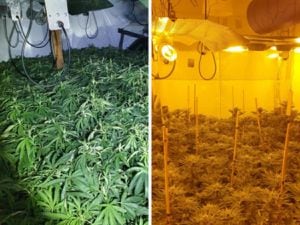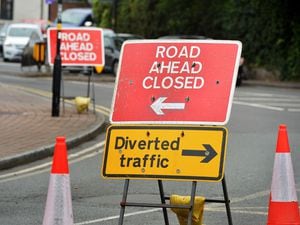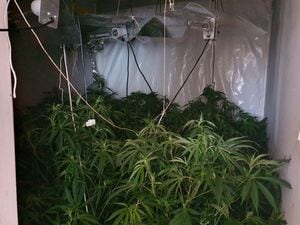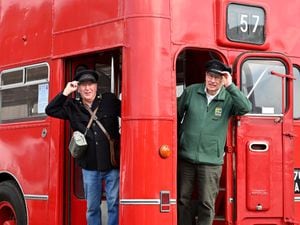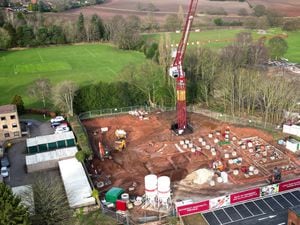Aldridge-Brownhills General Election profile: Seat of two halves still solidly Tory
We continue our series on the election battles in Staffordshire and the Black Country, looking today at Aldridge-Brownhills.
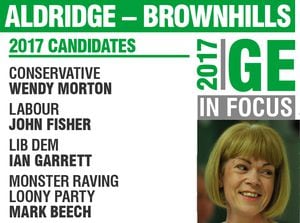
The Aldridge-Brownhills constituency makes up the north eastern fringe of Walsall, neighbouring Burntwood, Lichfield and Sutton Coldfield.
It is often described as a seat of two halves. Aldridge is predominantly an affluent residential community, while Brownhills is an ex-mining industrial town.
The constituency also covers Walsall Wood, Pelsall, Rushall, Shelfield, and Streetly. Over three-quarters of residents are homeowners, putting it in the top 55 for home ownership among constituencies in England and Wales, according to Census figures.
It also has one of the higher proportions of people describing themselves as Christian with 70.2 per cent.
The seat has been in existence since 1974 and was held by Labour until 1979.
Ever since it has been won by the Tories. Sir Richard Shepherd was the MP for 36 years between 1979 and 2015.
The closest Labour has got to winning the seat since 1974 was in 1997 at the height of Blair Mania when Janos Toth came within 2,500 votes of dethroning Sir Richard.
Two years ago Wendy Morton – a farmer’s daughter from Yorkshire – was named as the Conservative candidate and comfortably won the election with a 11,723 majority.
While Walsall borough is generally considered a Labour heartland (Both Walsall North and Walsall South are Labour-held constituencies), in the West Midlands Mayoral election voters backed Conservative Andy Street with 23,694 to Labour’s 16,725.
Who are the 2017 election candidates for Aldridge-Brownhills?
This time there are just four candidates in the General Election on June 8.
Mrs Morton will hope to retain the seat she won for the first time in 2015. She has been vocal in the House of Commons, speaking up for British manufacturing and industry. She was also a prominent campaigner for Andy Street in the mayoral election.
Labour’s candidate is John Fisher who came second in 2015 with 8,835 – just under a quarter of the vote. He is a councillor and cabinet member on Redditch Borough Council.
History teacher Ian Garrett is the Liberal Democrat candidate. He also stood two years ago and won 1,330 votes –3.4 per cent. He has previously been a councillor and parliamentary candidate in Sandwell.
And standing once again is Mark Beech of the Monster Raving Loony Party. In 2015, he managed just 197 votes which equated to 0.5 per cent of the total vote.
UKIP is not fielding a candidate this time.
Who can we expect to win?
Best odds: Cons 1/100, Labour 33/1, Lib Dem 33/1, Monster Raving Loony 500/1
Prediction: Conservative hold with increased majority
Aldridge-Brownhills may be a seat of two halves but rarely is it a two-way fight.
Even during the Blair years Labour was a long way off from taking control of the constituency.
It will be a surprise to many to find that UKIP is not standing, despite winning a fifth of the vote just two years ago. The party may not believe it stands a chance of winning, but in failing to fight for the seat UKIP appears to be handing the Conservatives an open goal.
There are nearly 8,000 votes up for grabs.
Jokes about UKIP voters flocking to the Monster Raving Loony Party aside, it is hard to see them going anywhere but to the Conservatives.
Surely those who voted for the Eurosceptics in 2015 won’t switch allegiances to Labour or the Lib Dems?
It is difficult to see any major Lib Dem revival here or any hope at all for Labour.
So if we assume that UKIP voters will support the Tories and that there will be some swing from Labour to both the Conservatives and the Lib Dems, Mrs Morton will be on course to winning one of the biggest mandates in percentage terms in the whole country – around the 70 per cent mark.
If Labour wants to be a party of Government again it needs to understand seats like Aldridge-Brownhills which are indicative of the traditional class divide in British politics but is seeing voters from all backgrounds unite in the way they are voting.

